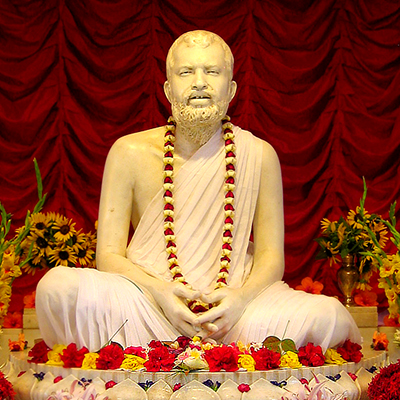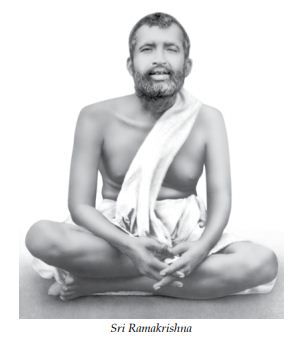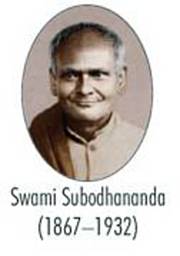A Portrait of Sri Ramakrishna
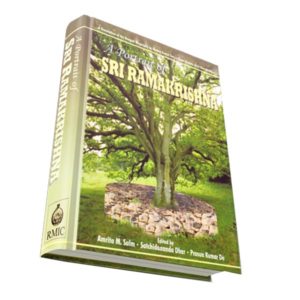 Author: Akshay Kumar Sen
Author: Akshay Kumar Sen
Publisher: Ramakrishna Mission Institute of Culture Kolkata
This is an English translation of the bengali book ‘Sri Ramakrishna Punthi’, which is the story of the divine play of Sri Ramakrishna with his devotees written in verse and one of the most authentic biographies of the Master. The author had the rare privilege of coming in direct contact with Sri Ramakrishna and was a witness to many episodes in the Master’s life. The importance of the book can also be judged by the fact that it received the blessings of Sri Sarada Devi and enthusiastic endorsement and encouragement of Swami Vivekananda.
Approaching Ramakrishna
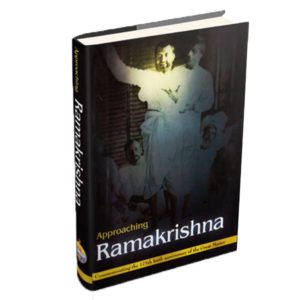 Author: A Compilation
Author: A Compilation
Publisher: Advaita Ashrama Kolkata
Sri Ramakrishna is an ocean in whose heart the universe is nestled like an island. Awed by the expanse of infinite depth around, we in the universe constantly try to perceive this personality in our own way. Our perception is unique every time as is the knowledge we obtain thereby. Approaching Ramakrishna becomes our prayer to the supreme reality.
Companions and followers of Ramakrishna
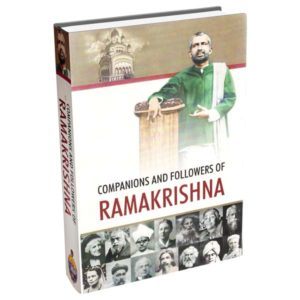 Author: A Compilation
Author: A Compilation
Publisher: Advaita Ashrama Kolkata
The book is based on the Bengali book ‘Sri Ramakrishna Parikrama’ by Kalijivan Devsharma and contains brief information about 1273 persons who were either companions or followers of Sri Ramakrishna. It will help readers who want to know more about the lesser-known characters who find mention in Sri Ramakrishna’s literature as well as tradition.
Girish Chandra Ghosh
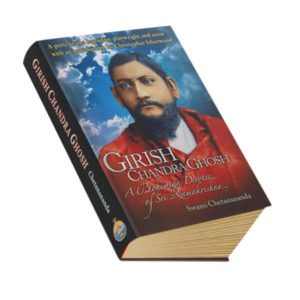 Author: Swami Chetanananda
Author: Swami Chetanananda
Publisher: Advaita Ashrama Kolkata
*This book is for sale in India only and cannot be exported.
Girish Chandra Gosh – A Bohemian devotee of Sri Ramakrishna
Girish Chandra Ghosh (1844-1912) was the father of Bengali theatre, Calcutta’s own Goethe, as brilliant and prolific as Shakespeare. A massively successful playwright, composer, actor and director, eventually single-handedly created the modern performing arts in northeastern India. But that’s just a small part of the story.
On 21 September 1884, a priest from the nearby Kali temple arrived at Girish?s Star Theatre to watch his play, Chaitanya Lila. It was Sri’s Ramakrishna Paramahamsa, one of the greatest saints of the 19th century. The meeting of these two giants would prove portentous. At the feet of the spiritual master, Girish would claim his most celebrated role, as Ramakrishna?s beloved and exuberantly unconventional devotee.
?I am a sinner?, Girish told Ramakrishna frankly when the two met; he was a drunkard and a debauchee, but never a hypocrite; their remarkable relationship is a classic story of redemption, as Ramakrishna’s unconditional acceptance and gentle guidance transformed Girish from a committed atheist into a passionate lover of God.
Girish Ghosh?s genius was rooted in his pervasive experience of death. He lost his parents early in life, and at various times most of the siblings, both his wives, and even some of his young children. Unrelenting tragedy drove the famous writer to alcoholism, but also gave death and power to his enormous body of work. Ramakrishna helped Girish see beyond his personal tragedies into the beauty and subtle purpose of the Divine Mother’s will.
Few of Swami Vivekananda’s Western admirers realize however, that Ramakrishna was and remains even today the patron saint of the stage in his native Bengal, a testament to his enduring impact on Girish Ghosh and artists and actors of India.
This book provides a fascinating introduction to Ramakrishna?s most colourful and least orthodox devotee. Details of numerous encounters between master and disciple have been preserved; we actually see Ramakrishna teaching and reshaping this difficult student. Chetanananda also describes Girish Ghosh?s contributions to the development of modern Bengali theatre and summarize some of his most influential plays, revealing Ramakrishna?s direct influence. The sparkling arts and vibrant spirituality of 19th century Calcutta?at the time a cultural centre of British India?comes to life in this vivid portrait of that magical era.
Book Review:
Girish Chandra Ghosh (1844-1912) was the father of Bengali theatre. A massively successful playwright, composer, actor and director, he virtually single-handedly created the modern performing arts in northeastern India. But that’s just a small part of his story.
In this new book of his, Swami Chetanananda has exhaustively documented the life of Girish Chandra Ghosh for the English-speaking world.
How to Live with God
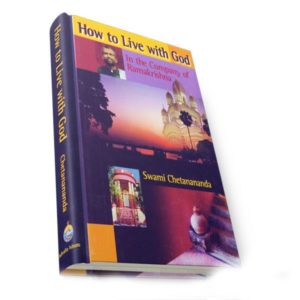 Author: Swami Chetanananda
Author: Swami Chetanananda
Publisher: Advaita Ashrama Kolkata
*This book is for sale in India only and cannot be exported.
How to Live with God transports us into Ramakrishna?s world with lucidity and breathtaking detail. Sitting alongside his closest disciples, we witness the master?s spiritual ecstasy, his astonishing insights, his humor, and his practical advice for anyone yearning to know God. Here we learn how to establish a relationship with God, and how to love God. Much of the information is translated into English for the first time.
Life of Sri Ramakrishna – Foreword By Mahatma Gandhi
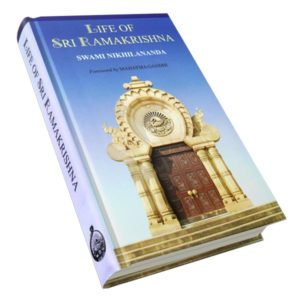 Author: Swami Nikhilananda
Author: Swami Nikhilananda
Publisher: Advaita Ashrama Kolkata
The story of Ramakrishna Paramahamsa’s life is a story of religion in practice. His life enables us to see God face to face. No one can read the story of his life without being convinced that God alone is real and that all else is an illusion.
Mahendra Nath Gupta
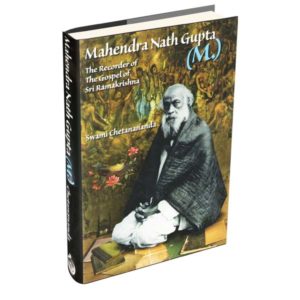 Author: Swami Chetanananda
Author: Swami Chetanananda
Publisher: Advaita Ashrama Kolkata
*This book is for sale in India only and cannot be exported.
That Sri Ramakrishna’s inspiring teachings have the quicky spread throughout the world is due in no small part to the immense appeal of ‘The Gospel of Sri Ramakrishna’. The recorder of this masterpiece, Mahendranath Gupta, remains virtually unknown, as he left scarcely a trace of himself in his work, focusing entirely on the luminous personality of Sri Ramakrishna. This is a biography of this great devotee, the self-effacing author who craved no accolades, whose only mission in life was to spread the life-giving message of his Master.
Nectarean Blooms – Daily Quote From Sri Ramakrishna
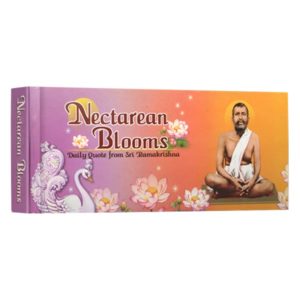 Author: A Compilation
Author: A Compilation
Publisher: Sri Ramakrishna Math Chennai
This book is a compilation of inspiring nectarine-like sayings of Sri Ramakrishna in the form of a daily quote, and when read, contemplated and practised every day, will improve the spiritual quality of the lives of the readers and remove the obstacles to God-realization in this modern and materialistic world. Swami Vivekananda regarded Sri Ramakrishna as the consummation of millennia of Indian spiritual tradition.
Rama and Krishna as Ramakrishna
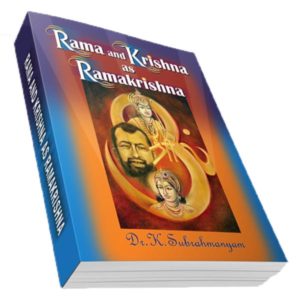 Author: Dr.K.Subrahmanyam
Author: Dr.K.Subrahmanyam
Publisher: Sri Ramakrishna Math Chennai
This book is based on the Sri Ramakrishna’s statement to Narendra, “He who was Rama and Krishna is now, in this body, Ramakrishna – but not in your Vedantic sense” and the uniformity of divine qualities exhibited by the incarnations. It throws light on how Sri Ramakrishna exhibited the divine qualities that are similar to His earlier avatar of Rama and Krishna.
Great Thinkers on Ramakrishna Vivekananda
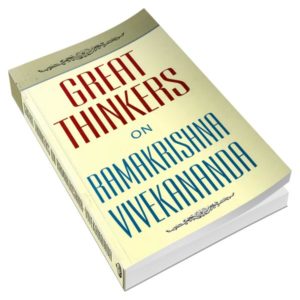 Author: A Compilation
Author: A Compilation
Publisher: Ramakrishna Mission Institute of Culture Kolkata
This book includes tributes to Sri Ramakrishna and Swami Vivekananda from savants across the world.
The increasing popularity of the book, Viz. World Thinkers on Ramakrishna Vivekananda, originally published in 1980, has naturally called for its revision, additions, and alterations through the passage of time.
In its revised edition the book in fitness of things be is a new and title, Great Thinkers on Ramakrishna-Vivekananda. In the words of Sri Aurobindo, ‘of all the souls [avatars] Sri Ramakrishna was the last and greatest, far while others felt God in a single our limited aspect, he felt Him in His illimitable unity as the sum of an illimitable variety. In him the spiritual experiences of the millions of saints who had gone before were renewed and united. Sri Ramakrishna gave to India the final message of Hinduism to the World.’
The Ramakrishna-Vivekananda movement has been the most marvelous contribution of creative India to world civilization. If Sri Ramakrishna is regarded as they ‘prophet’ after the new movement, Swami Vivekananda is certainly its greatest ‘preacher’ of protagonist. In day is born anew through the Ramakrishna-Vivekananda movement to work out the salvation not only of India but of the world at large.
The book includes tributes by: Aldous Huxley, Arnold J. Toynbee, Sri Aurobindo, Brojendra Nath Seal, C. Rajagopalachari, Christopher Isherwood, D. S. Sharma, Dalai Lama, Friedrich Max Muller, Hiren Mukherjee, Jowaharlal Nehru, K. M. Munshi, Leo Tolstoy, M.K. Gandhi, Emma Calve, Rabindranath Tagore, Subash Chander Bose, S. Radhakrishnan, Annie Besant, Bal Gangadar Tilak, Huang Xin Chuan, Huston Smith, Indira Gandhi, J. C. Bose, Romain Rolland, Will Durant, etc.
Book Review:
In 1983 Swami Lokeshwarananda brought out a small book titled World Thinkers on Ramakrishna- Vivekananda. After several reprints, a revised edition of this well-known book was brought out in 2007. The present book is its second revised edition, with many additions and an improved organization of matter.
Ramakrishna and Vivekananda are two aspects of the same truth. While Sri Ramakrishna was an infinite storehouse of spirituality, Swamiji broadcast this precious treasure to one and all. The universality and all-inclusiveness of their lives and message drew, and continues to draw, great thinkers the world over. Inspired by their life and message, many of these great men and women have articulated their admiration and reverence in the form of glowing tributes and thoughtful observations. The book attempts to present a cross-section of such tributes and observations.
The first and the second parts of the book deal with the tributes offered to Sri Ramakrishna and Swami Vivekananda respectively, and the third part encompasses the short and snappy biographical sketches of the great thinkers whose tributes have been included in the book. The list of the legendary people include famous philosophers and thinkers, eminent writers and litterateurs, educationists, historians, painters, statesmen, and scientists from all over the world, renowned in their respective fields. To name a few: Aldous Huxley, Christopher Isherwood, Max Müller, Huston Smith, Sri Aurobindo, Jawaharlal Nehru,
K. M. Munshi, Leo Tolstoy, Mahatma Gandhi, Paul Brunton,
R. C. Majumdar, Romain Rolland, Sarojini Naidu, Subhas
Chandra Bose, Will Durant, William James, Bal Gangadhar Tilak, J. C. Bose, Rabindranath Tagore, S. Radhakrishnan, Subrahmanya Bharati, and others.
It is evident from the pages of the book that all of them were overwhelmed by Sri Ramakrishna’s inner spirituality and utter simplicity, apparently unsophisticated but nectarine, overflowing, unalloyed love and universality. Richard Schiffman, says, ‘To one and all, Ramakrishna offered a vision of hope’, whereas Romain Rolland aptly calls him ‘the symphony of India’.
On the other hand, it is the leonine strength, virility of Swamiji, his love for motherland, enshrinement of the Advaitic principle in his life, bracing self-reliance, humour, courage, and his allencompassing love for all that cast a magnetic spell on the great savants. Almost all of them voice their admiration for Swamiji’s stupendous contribution towards harmonizing East and West, religion and science, past and present, in fact, life itself. In the words of Rabindranath Tagore, ‘Vivekananda’s gospel marked the awakening of man in his fullness and that is why it inspired our youth’.
Reading the book is an excellent opportunity to get a peep into what some of the most gifted and greatest contemporary thinkers from diverse fields have said of Sri Ramakrishna and Swami Vivekananda. It enables the readers to get a better understanding of the life and message of Sri Ramakrishna and Vivekananda—in a larger, international perspective. One feels imbued with the spirit of Sri Ramakrishna and Vivekananda after reading the book. It is stimulating to explore further about the immensity of these great lives.
Modestly priced and elegantly designed, the book is recommended to all libraries, including the personal collections of devotees and intellectuals.
